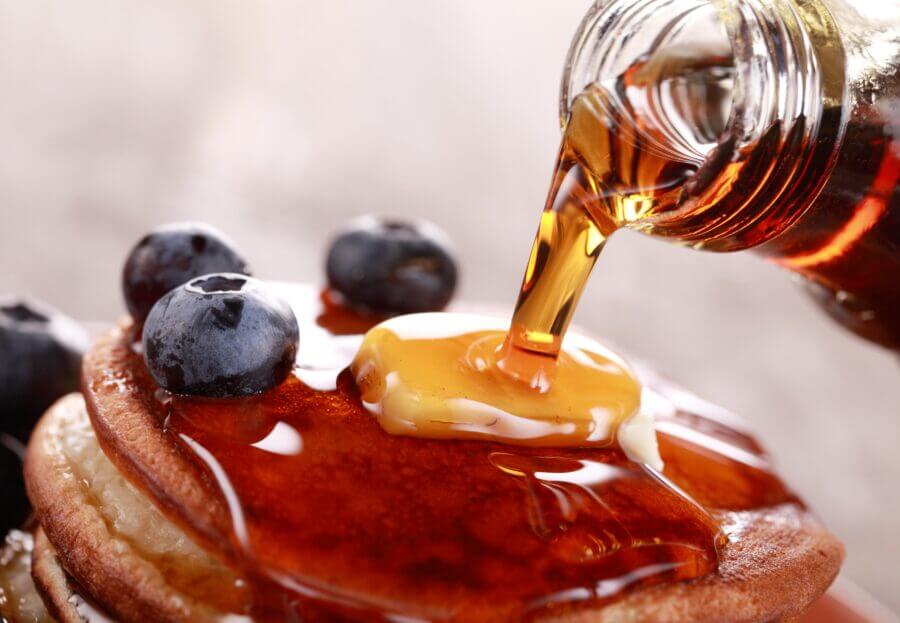Ah, the Amish. Masters of simplicity, champions of carbs, and proud enemies of blenders. They’ve been whipping up culinary miracles using nothing but elbow grease and cast iron. You don’t need a bonnet or a horse-drawn buggy to channel their kitchen wizardry—just a willingness to ditch the microwave and embrace the rolling pin like it’s your new religion. Ready to out-bake Betty Crocker without Wi-Fi? Let’s go.

Amish cooks don’t waste a drop—especially sauerkraut juice. This tangy leftover brine doubles as a meat tenderizer, transforming tough cuts into juicy, flavorful perfection.
The acidity in sauerkraut juice breaks down proteins naturally, saving you from mystery marinades with 42 ingredients. Plus, it adds a subtle zing you didn’t know you needed.
Just soak your meat for a few hours or overnight. When you cook it, the flavor’s amped, the texture’s buttery, and you feel weirdly proud of cabbage water.
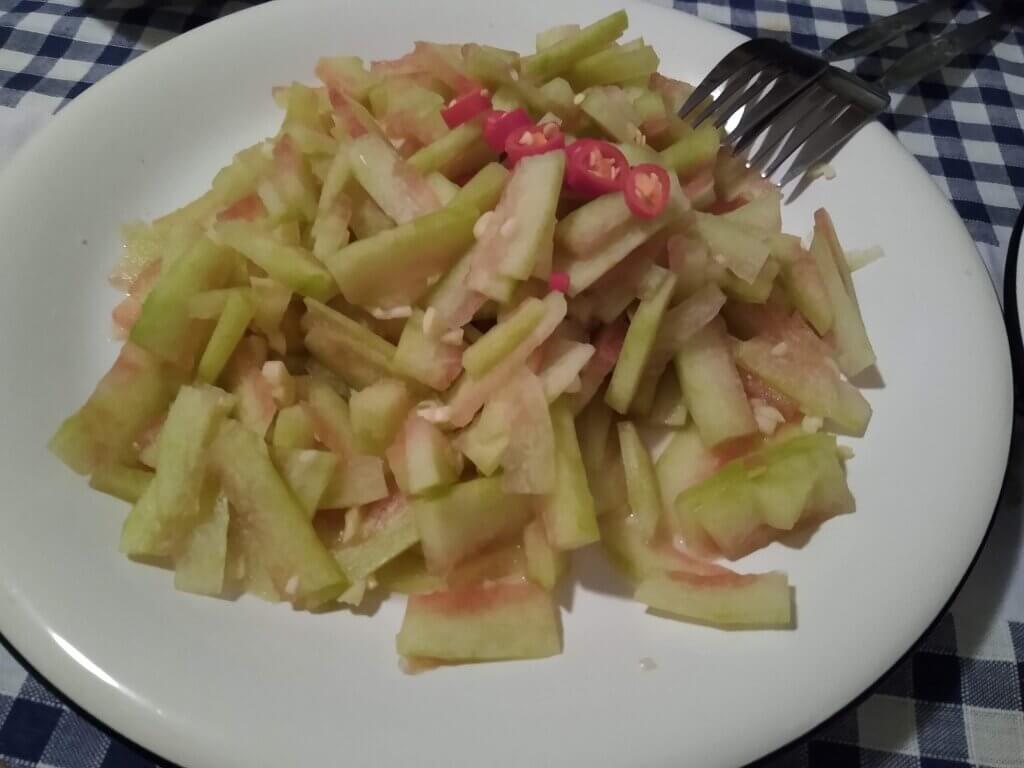
Amish cooking wastes nothing, not even the part of watermelon you’ve been tossing your whole life. That pale rind? It’s secretly kitchen gold.
Peel off the green skin, chop the rind, and cook it like a vegetable. It’s great in relishes, pickles, or stir-fried until tender and sweet.
The texture is crisp yet soft when cooked, soaking up flavors like a sponge. It’s surprisingly tasty—and bonus, you get to feel smug about your zero-waste lifestyle.
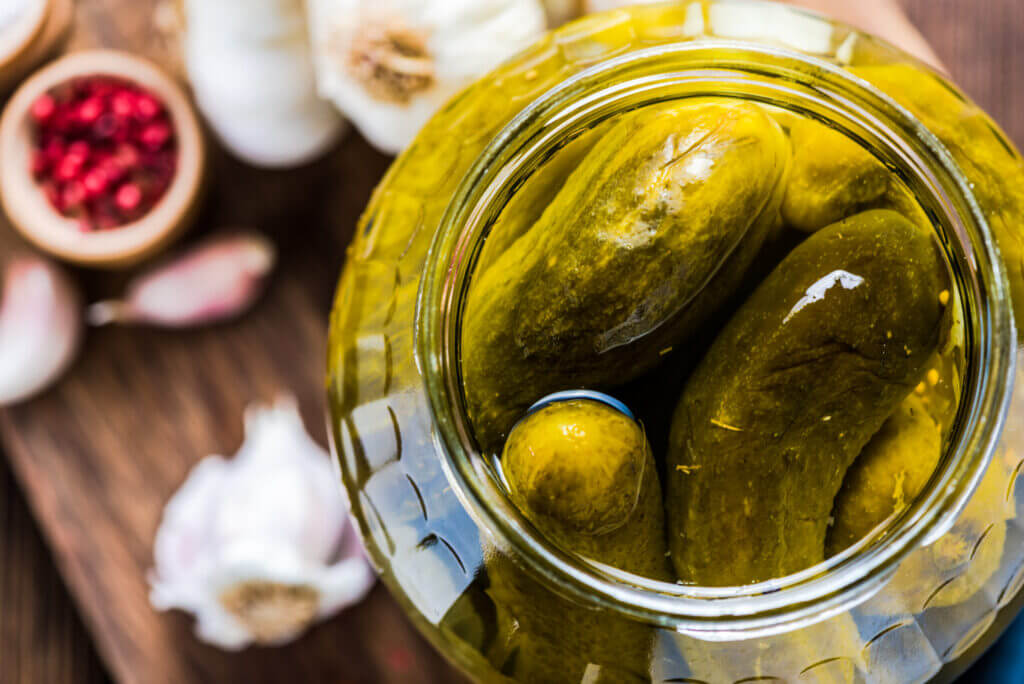
Amish bakers don’t just bake bread—they elevate it with secret ingredients like leftover pickle brine. Yep, that salty, sour juice isn’t just trash.
Swapping water for brine in dough adds an unexpected zing and depth of flavor. It’s like your sourdough got a personality and maybe a little attitude.
The acidity enhances the rise and gives your crust a gorgeous golden hue. It’s savory, surprising, and strangely addictive—just like the pickles that started it all.
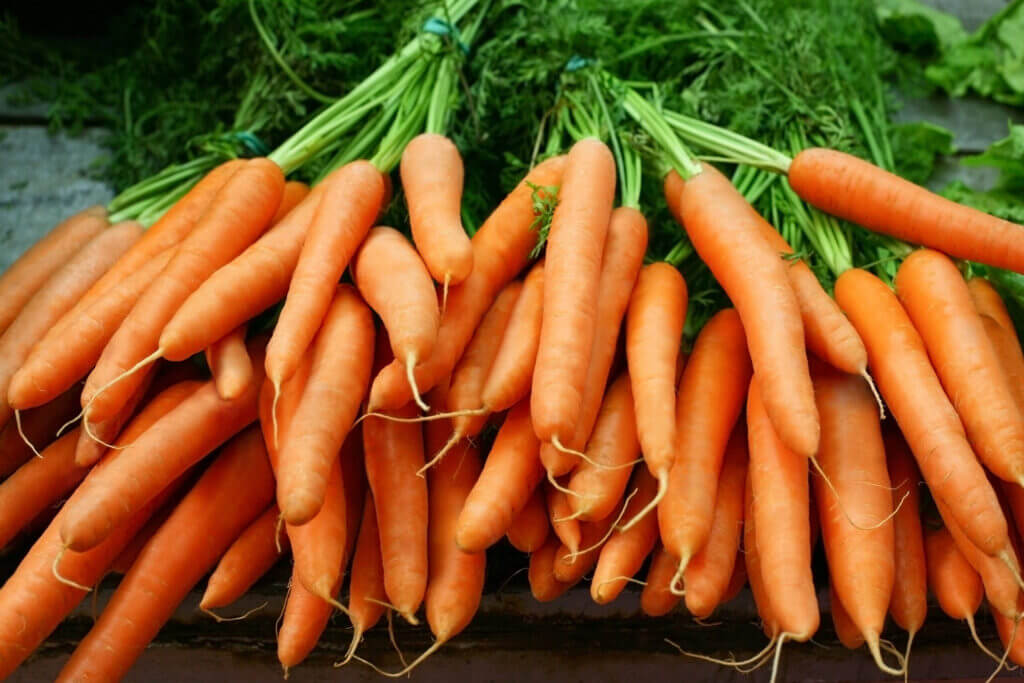
Amish kitchens don’t do limp, sad carrots. They bury them in sand—yes, literal sand—to keep them fresh, firm, and fabulous for months.
The sand maintains a cool, humid environment, slowing spoilage and preventing shriveling. It’s like a spa treatment for root veggies, minus the cucumber slices.
Just layer unwashed carrots in a box of slightly damp sand, store in a cool place, and dig them out when needed like delicious orange treasure.

Before blenders, food processors, and whatever else clutters your kitchen, Amish cooks relied on the mighty mortar and pestle—and honestly, it still slaps.
Grinding spices by hand releases oils and aromas you just don’t get from store-bought powder. Plus, it makes you feel like a medieval apothecary in the best way.
The control is unmatched—you decide the texture, the freshness, and how aggressively you want to work out your frustrations on innocent peppercorns. Therapeutic and delicious.

Amish kitchens are basically fermentation labs with aprons. One clever trick? Turning humble potatoes into sharp, flavorful vinegar—no science degree or electric gizmo required.
Start by boiling potatoes, then saving the starchy water. Add sugar and a natural yeast source like raw apple peels, and let the magic happen over weeks.
The result is a tangy vinegar perfect for cooking, cleaning, or impressing hipster dinner guests. It’s weird, it’s wonderful, and it started with potatoes. Of course it did.
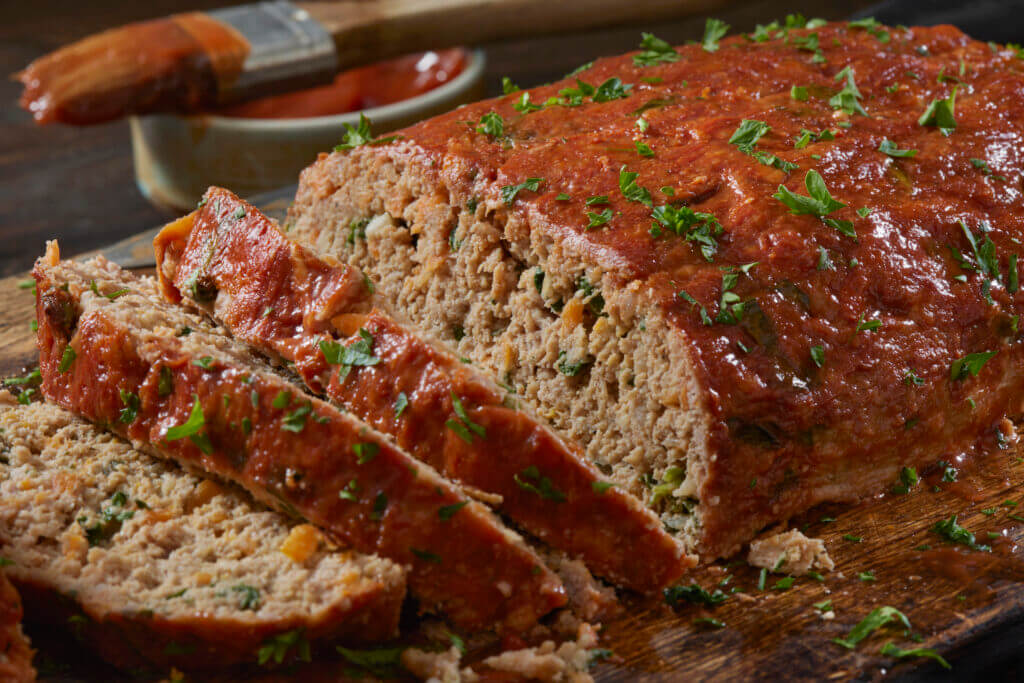
Amish cooks know how to make a little go a long way—enter oatmeal in meatloaf. It’s not weird; it’s genius-level thrifty and tasty.
Oats act as a binder, soaking up juices and holding everything together like a food-loving glue stick. Bonus: they make your meatloaf way less dense and brick-like.
You’ll also stretch that pound of ground beef like a pro, making enough meatloaf to feed a crowd or at least give you leftovers worth bragging about.

Before neon-colored packets ruled the dessert aisle, Amish cooks made gelatin the hardcore way—by boiling actual calf’s feet. Yes, it’s jiggly magic from hooves.
The bones and connective tissue release natural collagen when simmered for hours, creating a rich, wobbly base that puts store-bought gelatin to shame (and slight horror).
Once strained and cooled, you get a protein-packed, unflavored gelatin that’s perfect for sweet or savory dishes—and great for freaking out your modern dinner guests.

Amish cooks don’t just boil corn—they ferment it into pudding. That’s right, your favorite summer veggie just went full probiotic dessert, and it works.
They soak corn until it lightly ferments, softens, and develops a subtle tang. It’s then sweetened, simmered, and thickened into a pudding that’s unexpectedly delightful.
The flavor is earthy, slightly sour, and totally unique—like cornbread and yogurt had a baby. It’s old-school, low-waste, and weirdly addictive once you get over the concept.
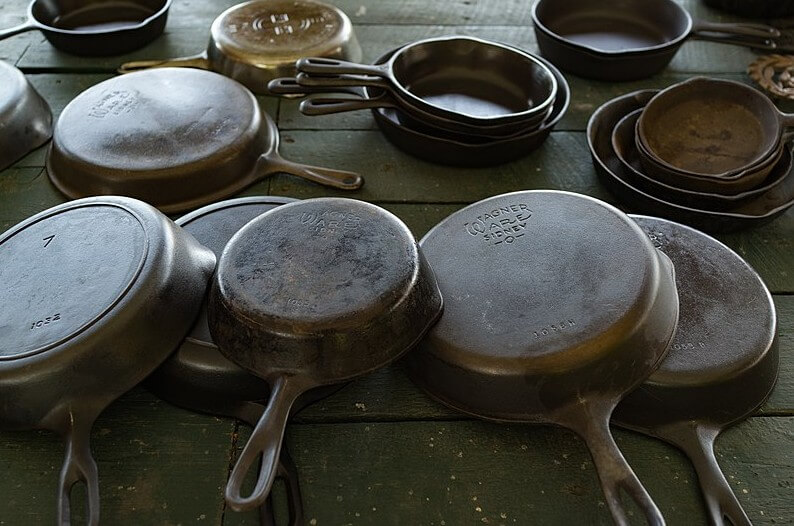
Forget trendy non-toxic sprays—Amish cooks reach straight into the woodstove for ashes when their cast iron needs a good scrub. It’s gritty, natural, and free.
Wood ash acts like a gentle abrasive, scouring off stuck-on food without damaging your precious seasoning. Plus, it makes you look extremely hardcore and resourceful.
Just mix the ashes with a little water to form a paste, scrub away, rinse well, and boom—your skillet is back to black magic status.

Amish cooks know one simple trick to take noodles from meh to marvelous: skip the water and boil them in milk instead. Yes, seriously.
The noodles absorb the milk as they cook, turning soft and silky while creating a naturally creamy sauce that clings like a warm culinary hug.
Add butter, a pinch of salt, maybe a sprinkle of cheese, and you’ve got a dish so cozy it could tuck you in at night.

When caffeine’s off the menu, Amish ingenuity kicks in. Enter roasted grains—barley, chicory, or rye—to mimic coffee without the jitters or judgment.
Roast the grains until dark and aromatic, then grind and brew them like you would coffee. The result? A toasty, nutty drink that feels oddly comforting.
It won’t wake you up like espresso, but it pairs great with pie and existential reflection. Plus, your nervous system will thank you for the break.
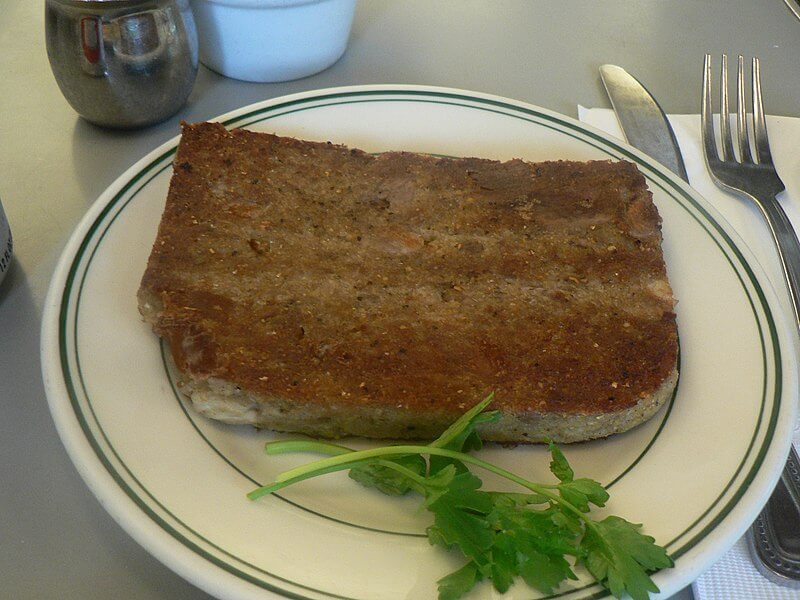
Amish cooks waste nothing, and scrapple is their meaty masterpiece of frugality. It’s made from pork scraps, cornmeal, and seasoning—basically, breakfast’s Frankenstein.
Simmer the scraps into a rich broth, then mix with cornmeal until thick. Pour it into a pan, chill it, and slice it like savory fudge.
Fry until golden and crispy on the outside, tender on the inside. It’s porky, hearty, and confusingly delicious—like bacon and polenta had a rustic baby.

The Amish don’t buy smoky cheese—they build small wooden houses and trap the flavor in themselves. It’s DIY dairy drama, and it’s deliciously worth it.
Cold-smoking cheese infuses it with rich, earthy flavor without melting it into goo. You’ll need patience, low temps, and the confidence of a cheese whisperer.
The result is cheese that tastes like it survived a campfire and came out stronger. Slice it, melt it, or just eat it dramatically by the chunk.
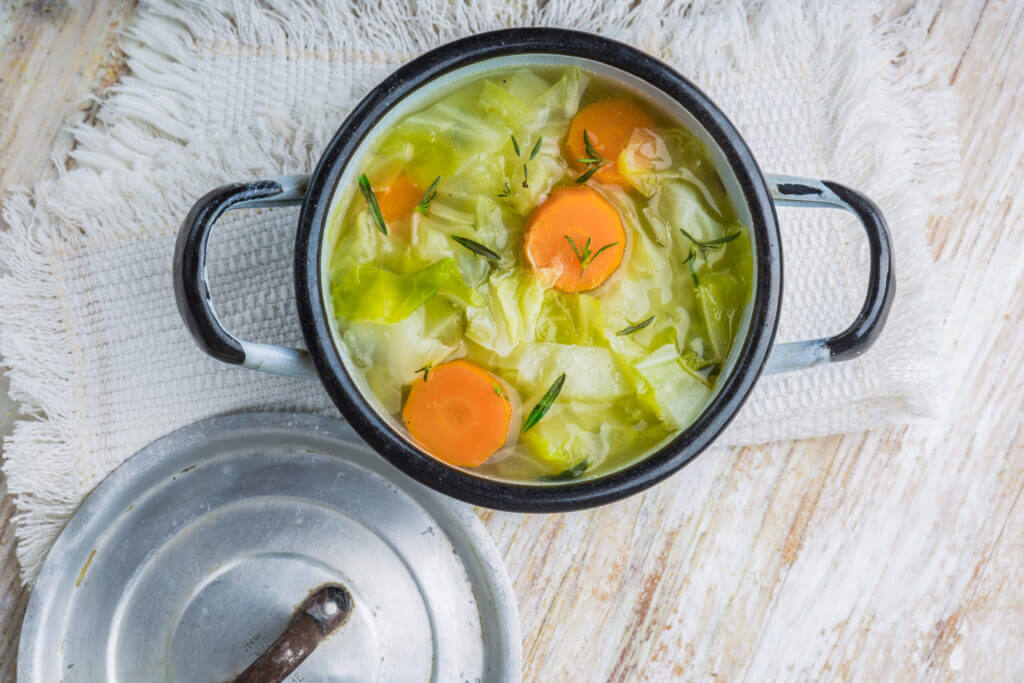
Amish kitchens never waste a crust. That sad, dry loaf on your counter? It’s soup gold—just crumble it in and let the magic happen.
As the bread simmers, it breaks down and thickens your broth, adding body and richness without the need for cream, cornstarch, or culinary wizardry.
It also gives your soup a rustic texture and a deeper flavor that says, “I make delicious things out of leftovers. What’s your superpower?”
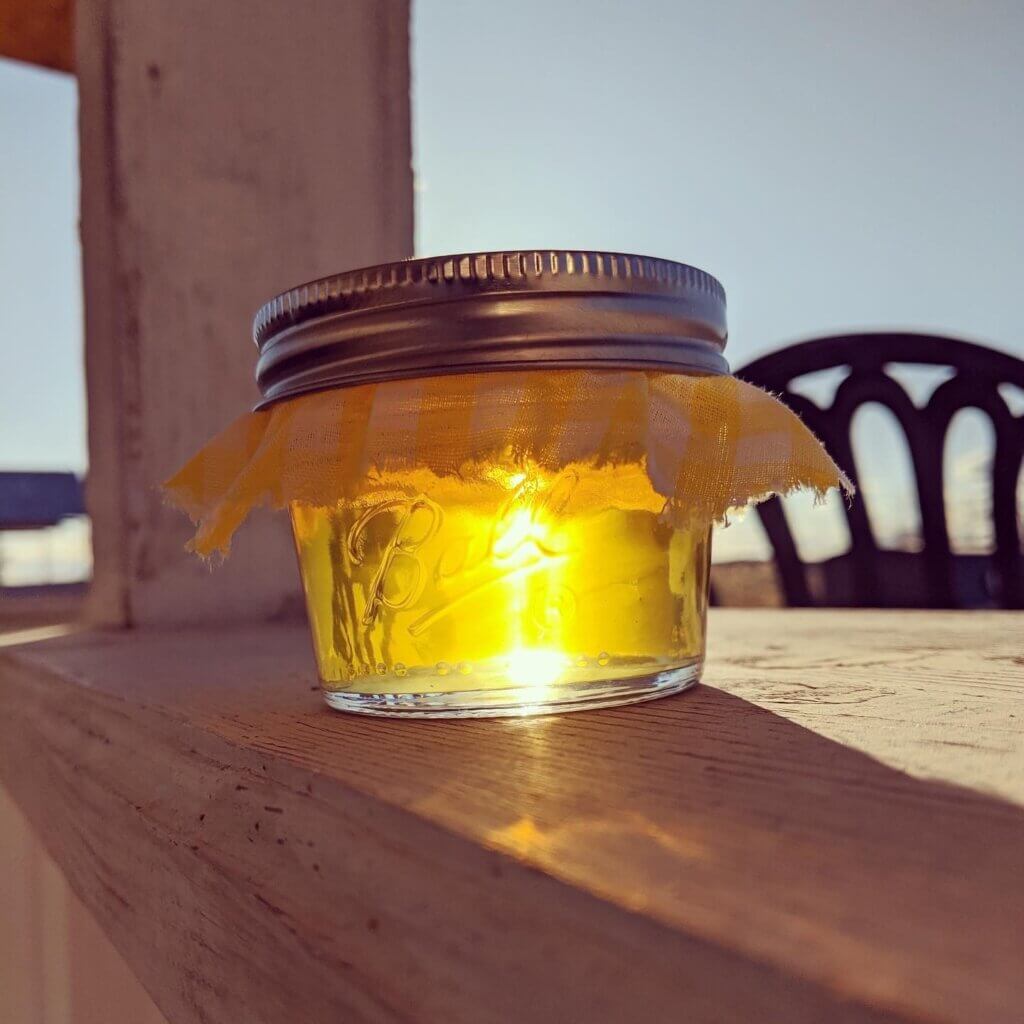
Amish cooks see dandelions and think “jam,” not “yard work.” Those sunny little weeds? They’re the secret stars of a floral, golden, honey-like jelly.
Just harvest the yellow petals (skip the green parts unless bitterness is your thing), steep them in hot water, and add sugar and pectin. Boom—jelly.
The flavor is light, sweet, and a little citrusy—like springtime in a jar. Slather it on toast and feel smug for turning lawn clippings into cuisine.
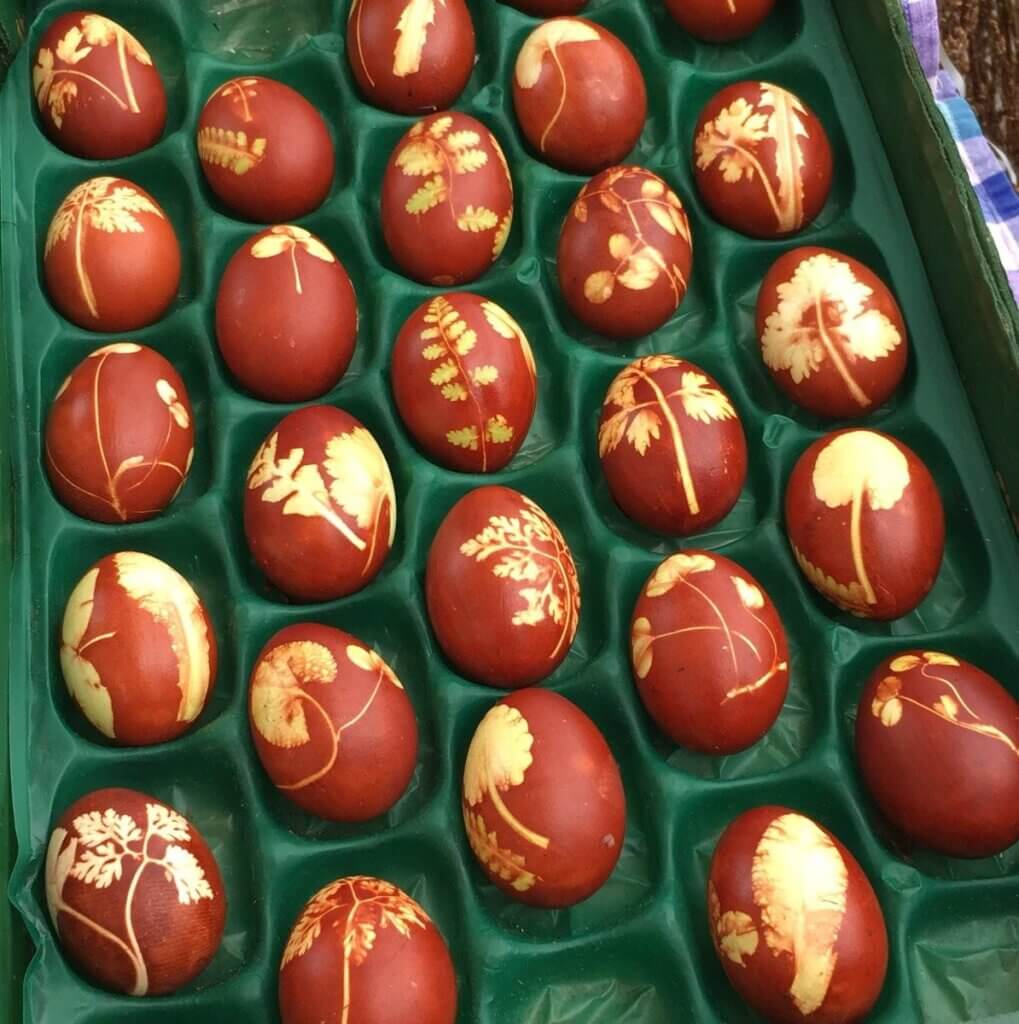
Forget food coloring kits—Amish egg dyeing involves zero neon and 100% pantry power. Just toss onion skins into boiling water with your eggs. That’s it.
The skins release a rich, earthy dye that tints eggs in stunning shades of amber, copper, and gold. No artificial nonsense, just straight-up rustic elegance.
It’s cheap, chemical-free, and makes your eggs look like they went to an artisan spa. Bonus: you get to feel crafty without actually crafting anything.
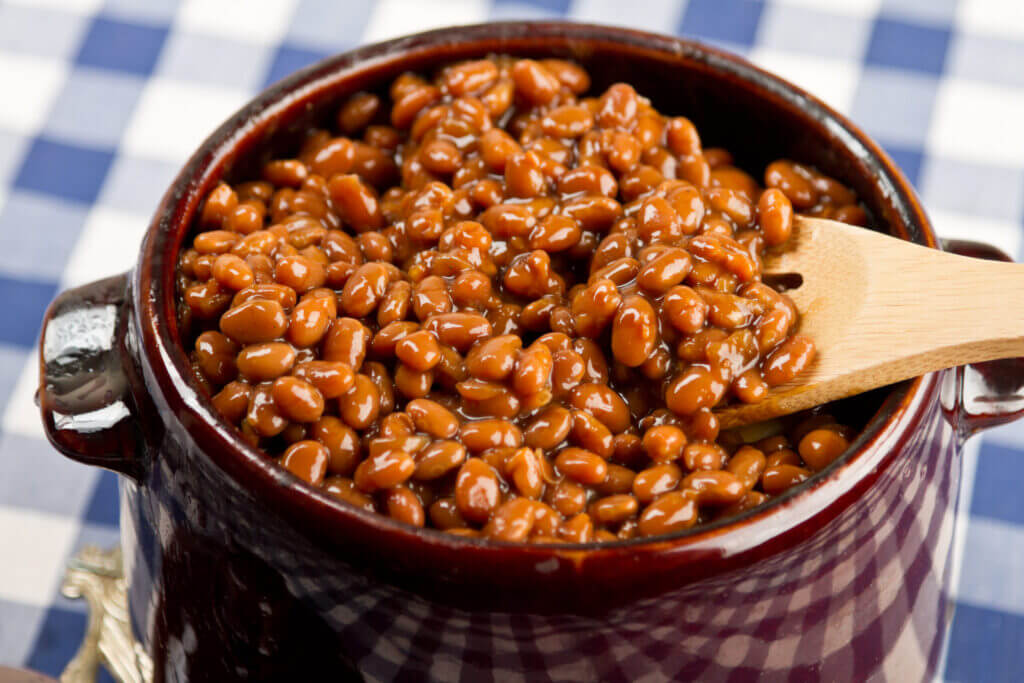
Amish baked beans aren’t just beans—they’re slow-cooked comfort bombs sweetened with molasses, that dark syrupy goodness with the soul of a Victorian chimney sweep.
Molasses adds depth, richness, and a subtle smokiness that sugar just can’t match. It turns basic beans into a sticky, savory masterpiece worthy of second helpings.
Simmer it low and slow with onions, maybe bacon if you’re feeling wild, and serve proudly. It’s like BBQ sauce and maple syrup had a delicious bean baby.
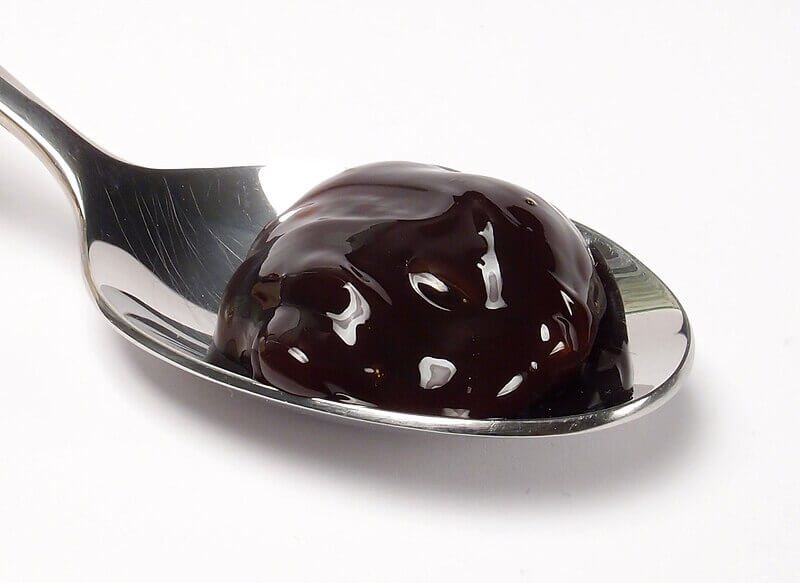
Amish kitchens love a good sugar swap, and beet syrup is their secret weapon—sweet, earthy, and harvested straight from the dirt like a candy root.
Boil down beet juice until it thickens into a deep red syrup. It’s rich, naturally sweet, and gives your desserts a rustic, wholesome twist.
Use it in pies, cakes, or drizzled on biscuits when you’re feeling extra. It’s basically the farm-to-frosting sweetener you didn’t know you were missing.
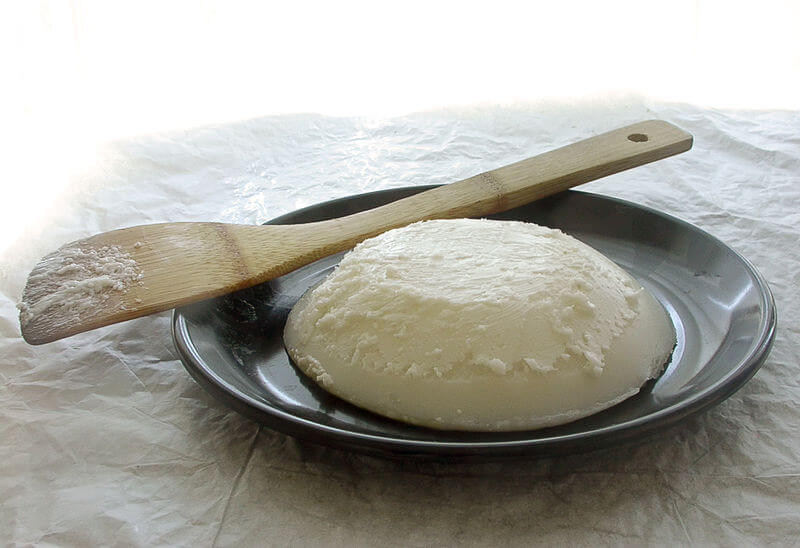
Amish cooks don’t fear fat—they embrace it, especially goose fat. It’s like butter’s bolder cousin with a PhD in flavor and crispiness.
Scoop it from a roasted goose or render it yourself. Use it to fry potatoes, sear meat, or slather it on bread like a decadent rebel.
It adds deep, savory richness to any dish, turning simple meals into culinary power moves. Plus, it makes you sound incredibly fancy at potlucks.

Amish kitchens love efficiency with a side of vintage flair, and nothing says “productive nostalgia” like a hand-cranked apple peeler whirring through your fruit stash.
Clamp it to the table, crank that handle, and watch it peel, core, and slice apples faster than your modern gadgets—and without needing to be charged.
It’s oddly satisfying, wildly effective, and turns apple prep into a fun little workout. Bonus: you’ll feel like a pioneer with mechanical superpowers.
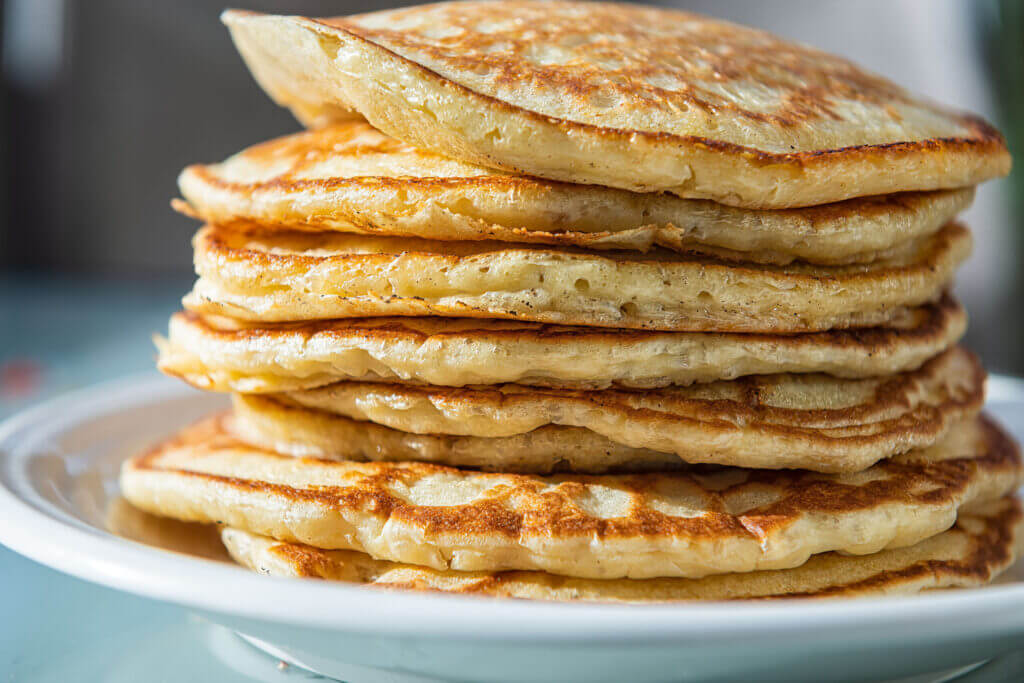
Amish pancakes don’t mess around with thin batter nonsense. They swap water for cream, turning your breakfast into a decadent dairy-powered dream come true.
The cream adds richness, tenderness, and that melt-in-your-mouth magic that makes syrup optional—but still very encouraged. It’s the breakfast flex your skillet’s been waiting for.
Just mix it into your batter and watch those pancakes puff up like they’re made of clouds and good decisions. Sorry, water—you’re officially benched.
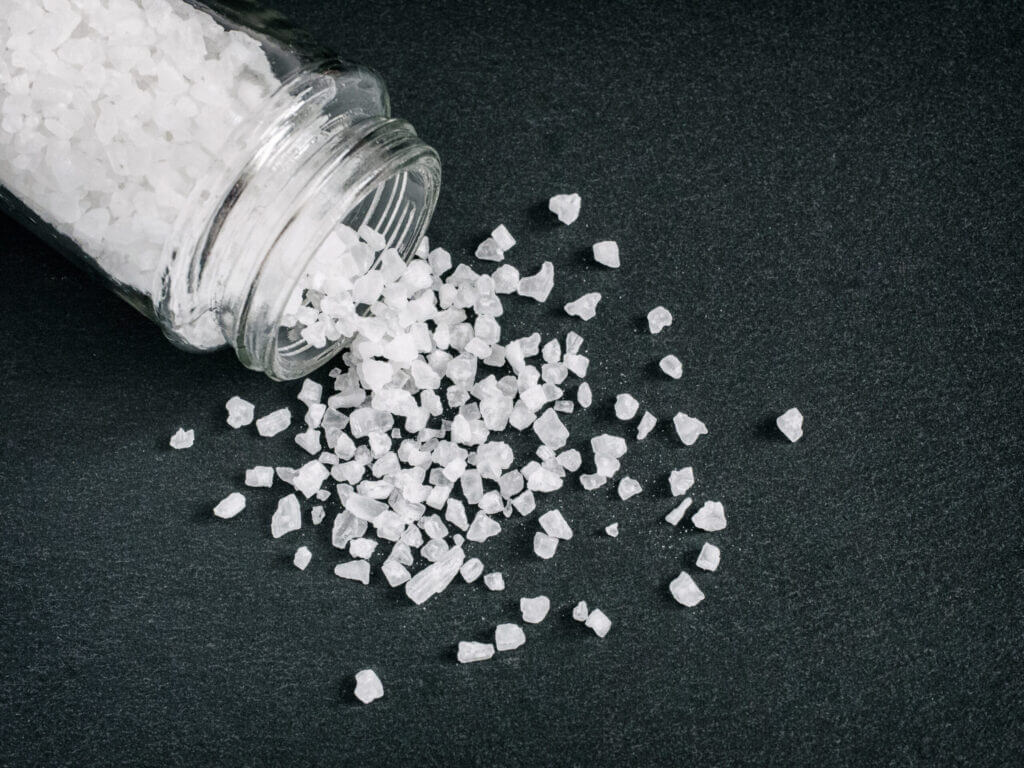
Yes, Amish folks sometimes add salt to coffee—and no, it’s not because they’re trying to ruin your morning. It actually makes perfect sense.
A tiny pinch of salt cuts bitterness and brings out coffee’s natural sweetness. It’s the hack your overly complicated coffee maker wishes it had thought of.
Just don’t overdo it—this isn’t soup. One dash and suddenly your bargain brew tastes smoother, richer, and strangely like you know what you’re doing.

Amish cooks don’t toss corn husks—they steam bread in them, turning scraps into a brilliant, rustic baking tool that also looks suspiciously gourmet.
The husks trap moisture while adding a subtle, earthy aroma, giving you soft, tender bread with just enough cornfield charm to make it feel artisanal.
Just soak the husks, wrap your dough, and steam or bake. The result? A loaf so cozy and fragrant, you’ll feel like hugging it. But, like, don’t.
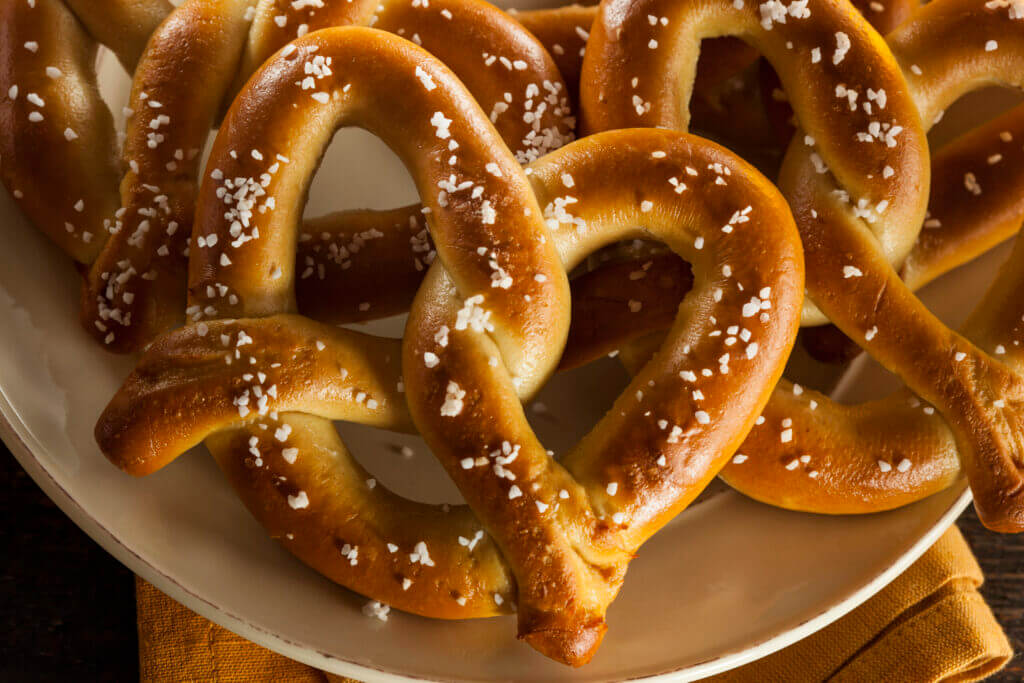
Amish bakers don’t skip steps—and soaking pretzels in food-grade lye is their not-so-secret move for that iconic dark crust and perfect chew.
The lye reacts with the dough’s surface, creating that deep brown color and unmistakable pretzel flavor. It’s science, but the delicious, carb-loaded kind.
Handle with care (it’s lye, not lemonade), then bake until golden. The result? Bakery-level pretzels that look intimidating but taste like salty, chewy perfection. Worth the minor chemistry vibe.

Amish bakers don’t waste even a scrap of dough—leftover pie crust becomes cookies faster than you can say “second dessert is justified.”
Just roll out the extra crust, sprinkle with cinnamon and sugar, and bake until golden. The result? Crispy, flaky bites of sweet pie-ish glory.
They’re buttery, addictive, and shockingly simple. Plus, you get bonus treats without making a whole new mess. Pie crust: it’s not just for pies anymore.

Amish cooks don’t just love beets—they love the whole dang plant. Those leafy beet tops? They’re not garbage; they’re your new favorite salad base.
Tender and slightly bitter, beet greens bring a fresh, earthy flavor that laughs in the face of iceberg lettuce. Plus, they’re packed with nutrients.
Toss them raw with vinegar, oil, and a sprinkle of salt. It’s simple, vibrant, and proof that the best ingredients are often the ones people throw away.

Before fridges were a thing, Amish folks kept eggs fresh for months using “water glass”—a potion that sounds fake but absolutely isn’t.
Mix pickling lime with water, dunk fresh unwashed eggs in it, and boom—your eggs stay good for up to a year without smelling like regret.
It’s weirdly satisfying, super practical, and makes you feel like a 19th-century prepper with chickens and secrets. Just don’t eat them all at once, overachiever.
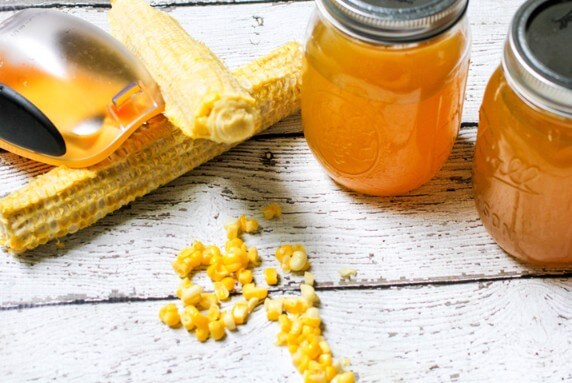
Amish cooks look at corn cobs and don’t see trash—they see jelly potential. Yes, even the part you normally chuck without a second thought.
Boil the cobs in water to extract every last whisper of flavor, then add sugar and pectin. The result? A golden jelly with sweet, buttery notes.
It tastes like corn on the cob met a fairground funnel cake. Slather it on toast, biscuits, or just eat it with a spoon—we won’t judge.
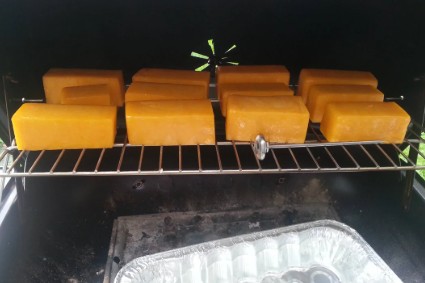
Amish kitchens don’t need fancy gadgets for gourmet results—they just cold-smoke cheese like it’s a totally normal Tuesday (because it is).
With a homemade or basic smoker, low temps, and plenty of patience, cheese takes on a rich, smoky flavor without turning into a gooey disaster.
The end result is bold, complex, and borderline addictive. Slice it, melt it, or hoard it like treasure—just don’t blame us when plain cheese feels boring forever.

Amish bakers don’t toss sour milk—they bake with it. That tangy carton in your fridge? It’s not a mistake, it’s a secret ingredient.
The slight acidity reacts with baking soda, making your cakes, muffins, and pancakes rise like a glorious gluten-filled sunrise. It’s science with a side of thrift.
Sour milk adds a subtle richness and depth you can’t fake. So next time your milk turns, skip the guilt and preheat the oven instead.

Amish cooks know that if you’re going to bake potatoes, you might as well do it in bacon fat—because flavor is free if it’s already in the pan.
Coat sliced or whole potatoes in rendered bacon grease, then roast until the edges are golden, the insides fluffy, and your kitchen smells like victory.
The result? A side dish so good it could qualify as a main. Crispy, savory, and absolutely not heart-healthy—but emotionally, it’s a full-on hug.
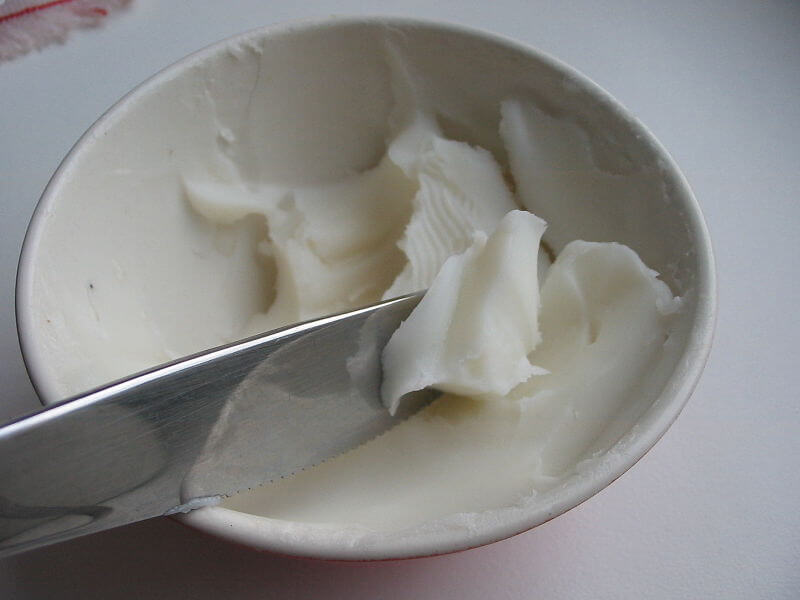
Amish kitchens don’t need lemon-scented foam to clean dishes—they make lard soap, the OG grease-fighting bar that scrubs without frills (or fragrance overload).
Rendered pork fat, lye, and a little patience create a tough, long-lasting soap that cuts through grime better than half the stuff on grocery shelves.
It’s natural, biodegradable, and kind of hardcore. Plus, you’ll feel weirdly powerful every time you wash a plate knowing bacon fat is doing the dirty work.
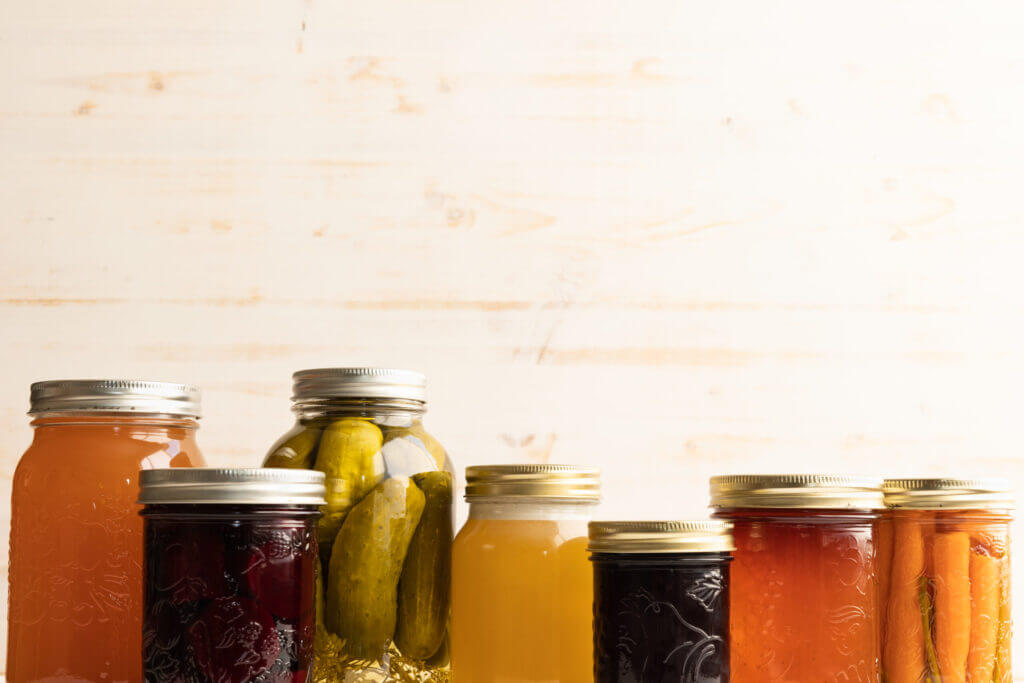
Amish cooks don’t recycle pickle jars—they repurpose them into fermentation chambers where cabbage becomes sauerkraut and vegetables find their tangy, probiotic destiny.
These jars are perfect: thick glass, tight-fitting lids, and already smelling like ambition. Just add salt, veggies, and time—and boom, homemade fermented greatness.
It’s eco-friendly, budget-friendly, and makes your pantry look like a rustic science lab. Plus, nothing screams “kitchen wizard” like burping a jar of bubbling beets.
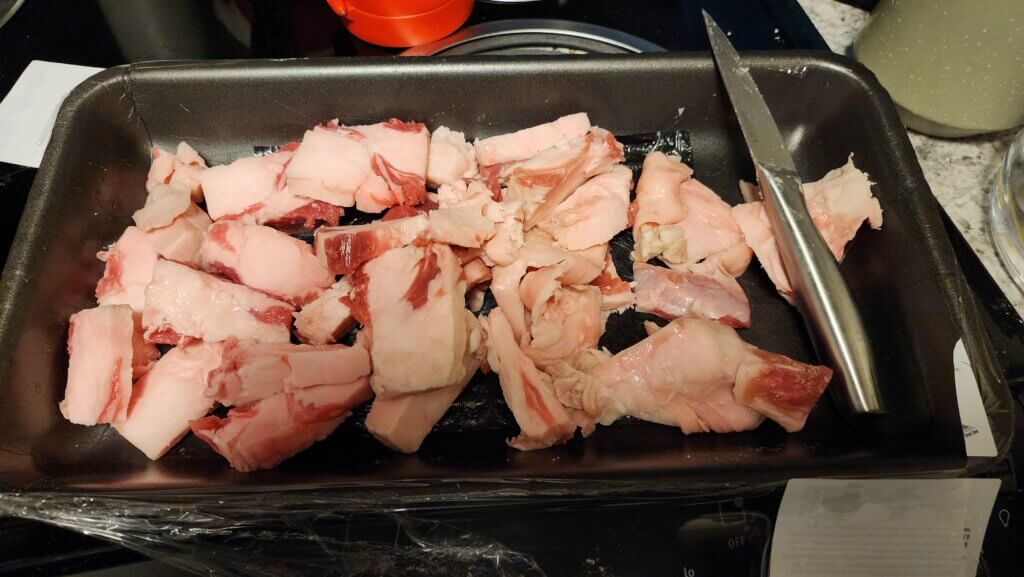
Amish cooks don’t toss meat scraps—they give them a second act in hearty meat pudding, where thrifty meets tasty in one weirdly comforting dish.
Simmer leftover bits with broth, grains, and seasoning, then bake until it sets into a sliceable, savory loaf that laughs in the face of waste.
It’s rustic, filling, and unapologetically old-school. Serve it hot, cold, or fried in a pan—it’s the meaty mystery your taste buds didn’t know they needed.
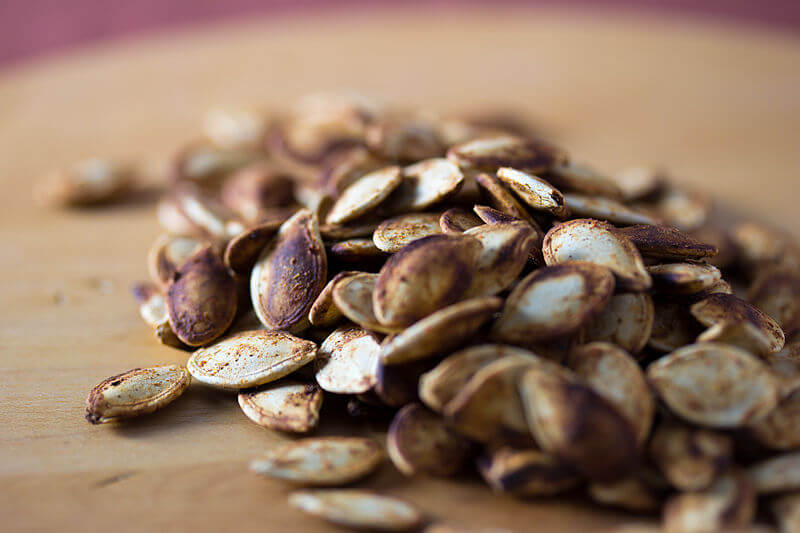
Amish kitchens don’t let pumpkin guts go to waste—especially not the seeds, which get roasted in butter until they’re crisp, nutty, and wildly addictive.
Toss cleaned seeds in melted butter, sprinkle with salt (or go wild with spices), and roast until golden brown and toasty like autumn in snack form.
The result is a crunchy treat perfect for munching, gifting, or hoarding. It’s buttery, wholesome, and way better than anything in a foil bag.

Amish cooks never waste a good bird. That golden fat rendered from chicken skin? It’s liquid gold for frying, roasting, or adding flavor to anything.
Schmaltz adds savory depth that oil just can’t touch. Spread it on toast, fry eggs in it, or make roasted veggies taste like a home-cooked hug.
It stores well, smells divine, and delivers peak comfort food energy. Plus, your food will taste like grandma cooked it—if grandma was a flavor wizard with chickens.

Forget plastic wrap. Amish bakers swaddle their bread and pastries in clean cloth towels, letting baked goods breathe while staying soft and protected from drying out.
Cloth helps maintain the perfect crust-to-crumb ratio. No sweating, no soggy bottoms, just fresh-tasting bread that doesn’t feel like it came from a sandwich dungeon.
It’s reusable, sustainable, and kind of charming. Plus, your kitchen will look like a charming little bakery instead of a hostage situation involving cling film.

When Amish cooks want to take noodles from “nice” to “next-level,” they crack duck eggs into the mix. More yolk equals more richness, chew, and flavor.
Duck eggs have higher fat content and firmer whites. This makes pasta dough silkier, springier, and delightfully decadent—like your taste buds just upgraded their vacation.
Use the same flour and water, swap the eggs, and get pasta so good it could make a grown man cry over spaghetti. Respect the duck.
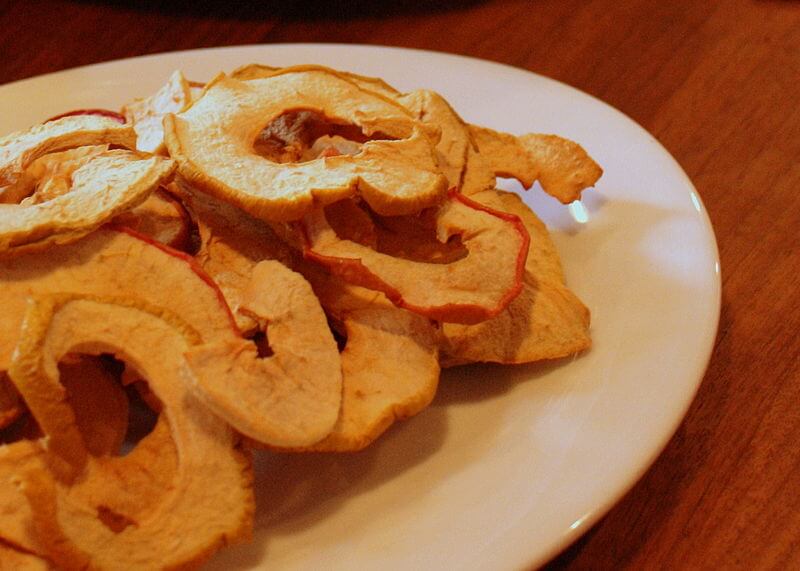
Amish cooks harness the sun and air to preserve apples. Thinly sliced, strung on thread, and hung like fruity laundry, they turn into chewy perfection.
It’s simple, effective, and looks adorably pioneer-core. The apples dry slowly, intensifying sweetness and becoming snacks with shelf life and frontier-level nostalgia built right in.
No dehydrator? No problem. This method uses zero electricity and delivers results that make trail mix jealous. Just watch out for curious squirrels and nosy neighbors.
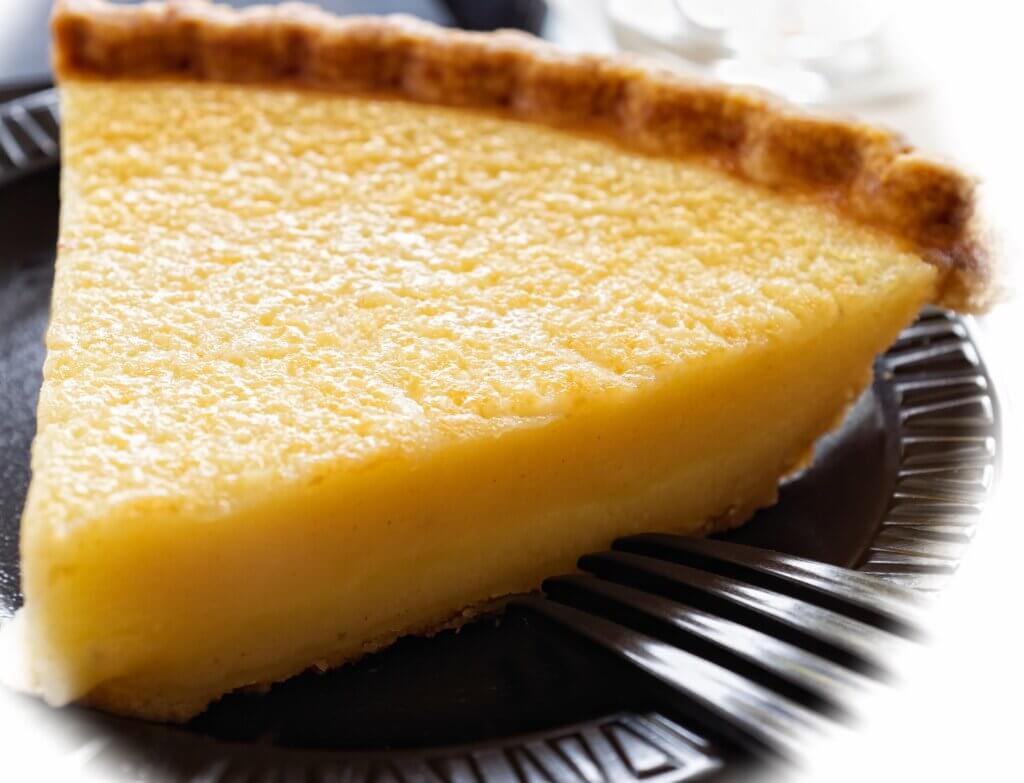
When life gave them no lemons, Amish bakers made vinegar pie—a zippy, sweet dessert with pantry staples and a flavor that punches way above its weirdness.
The vinegar mimics lemon’s tang, while sugar and spices turn it into a custard-like filling. It’s basically the Depression-era version of “don’t judge a pie.”
Set in a flaky crust and served warm or chilled, it’s nostalgic, resourceful, and surprisingly addictive. It tastes way better than it sounds, we promise.
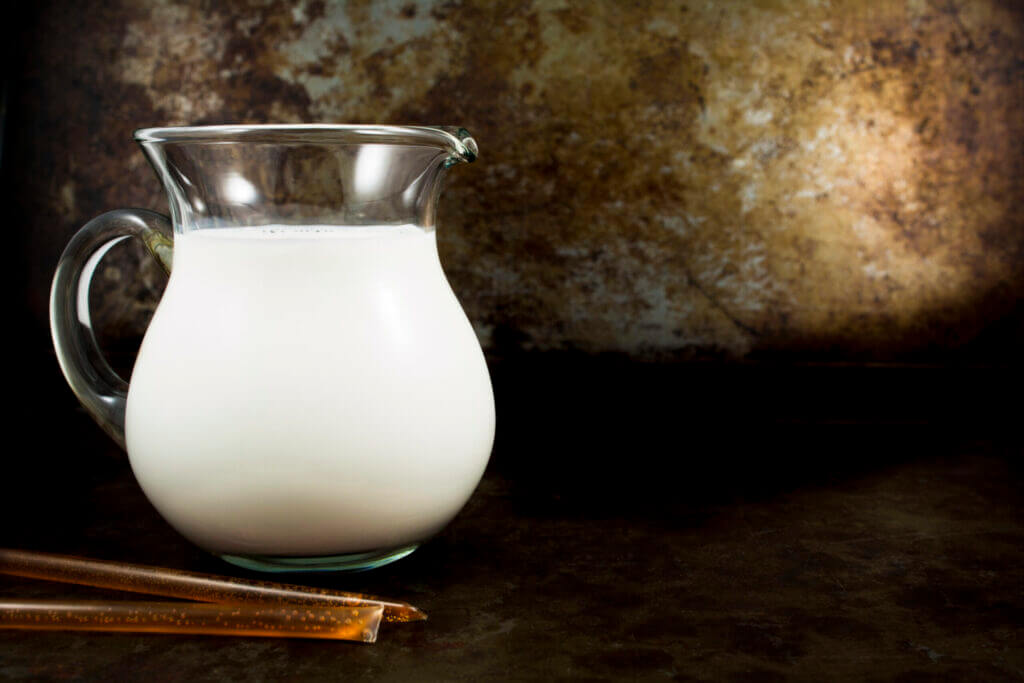
Amish cooks don’t just fry chicken—they give it a buttermilk spa first. This tangy soak turns poultry into juicy, flavor-packed bites of crispy perfection.
The acidity in buttermilk breaks down tough muscle fibers while infusing the meat with subtle richness. It’s like marinating, but with charm and dairy magic.
After a good soak, the chicken fries up with a crisp, golden crust and moist, tender insides. Basically, it’s the secret handshake of epic fried chicken.
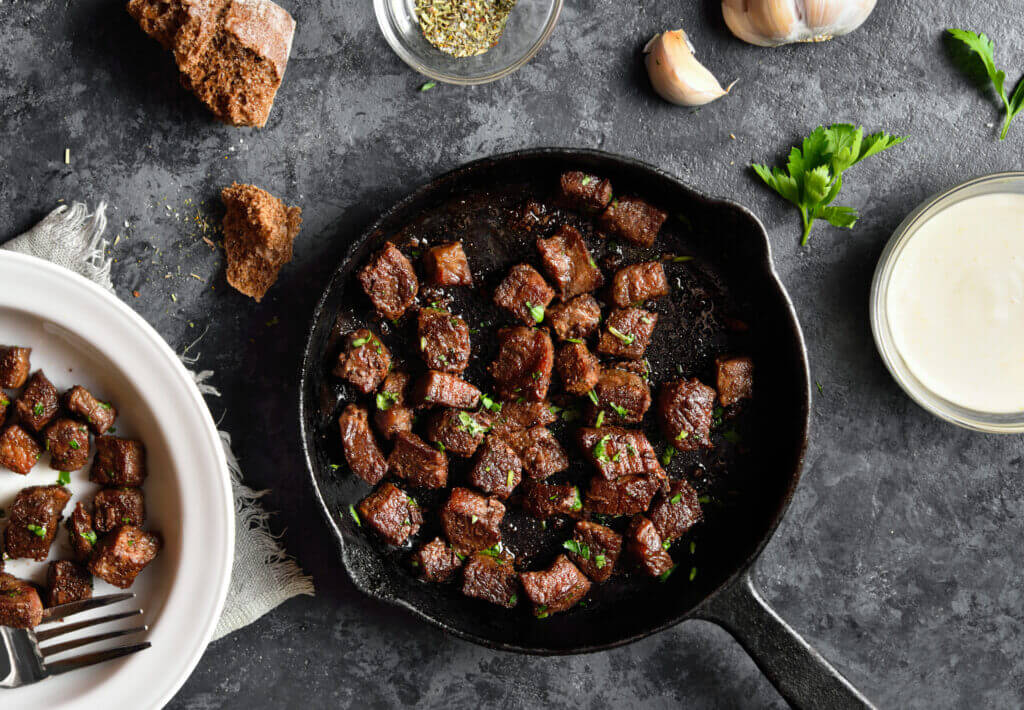
Wait—soap jelly for greasing pans? Yep, Amish cooks also whip up a fat-based version to slick baking pans without waste or wrappers in sight.
Made from lard or butter blended into a soft, spreadable paste, this “soap jelly” coats pans evenly, preventing sticking without messy sprays or wasteful paper.
It lives in a jar, lasts forever, and spreads like creamy pan insurance. One swipe, and your cookies, cakes, and casseroles slide out like they’re on vacation.

Before refrigeration, Amish households mastered the cold cellar: a cool, underground pantry for storing potatoes, butter, apples, and other things that fear the light.
These cellars stay naturally cool and humid, preserving freshness without humming machinery. It’s food storage that works with Earth, not against it—low-tech brilliance at its best.
Tucked beneath the house or barn, they keep produce firm and dairy safe. Also, they’re a great hideout if you’re avoiding chores or siblings.

One thing’s clear: Amish kitchens run on heart, hands, and hilariously hardcore efficiency. It’s not just cooking—it’s a whole delicious philosophy.
From fermenting corn to repurposing pickle juice, every tip proves that flavor doesn’t need gadgets, and waste doesn’t belong in your compost bin—or conscience.
So fire up that woodstove (or regular oven, you rebel), embrace butter as a lifestyle, and cook like your great-great-grandma is judging from the corner.








